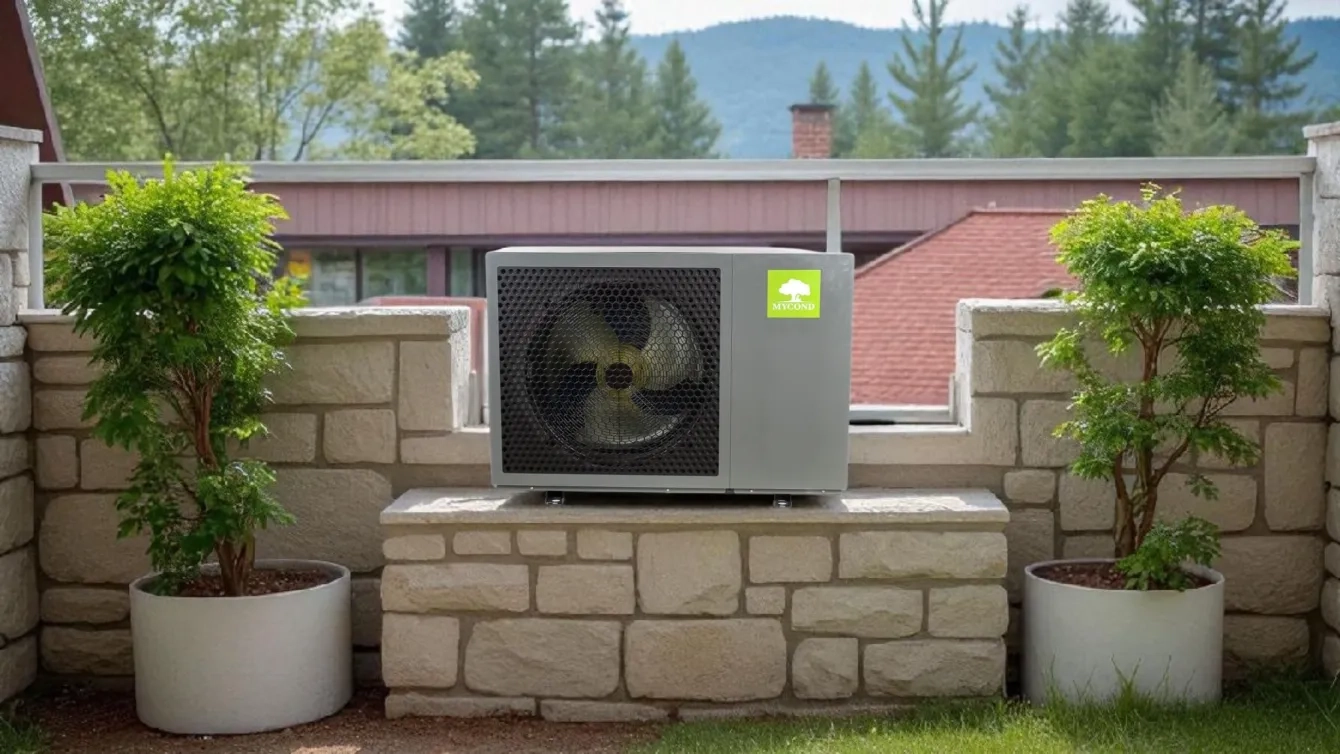
Imagine a typical situation: you own a house with cast-iron radiators that have served faithfully for decades. Your old gas boiler is on its last legs, and the heating bills hurt more every month. Switching to a modern heat pump seems like the obvious way to save, but there’s a serious obstacle. Your old heating system was designed to run with a high water temperature of 65–75°C, while most standard heat pumps can deliver a maximum of 55–60°C. You’re left with a tough choice: spend a significant amount to replace all radiators and pipes, or continue using inefficient and expensive heating.
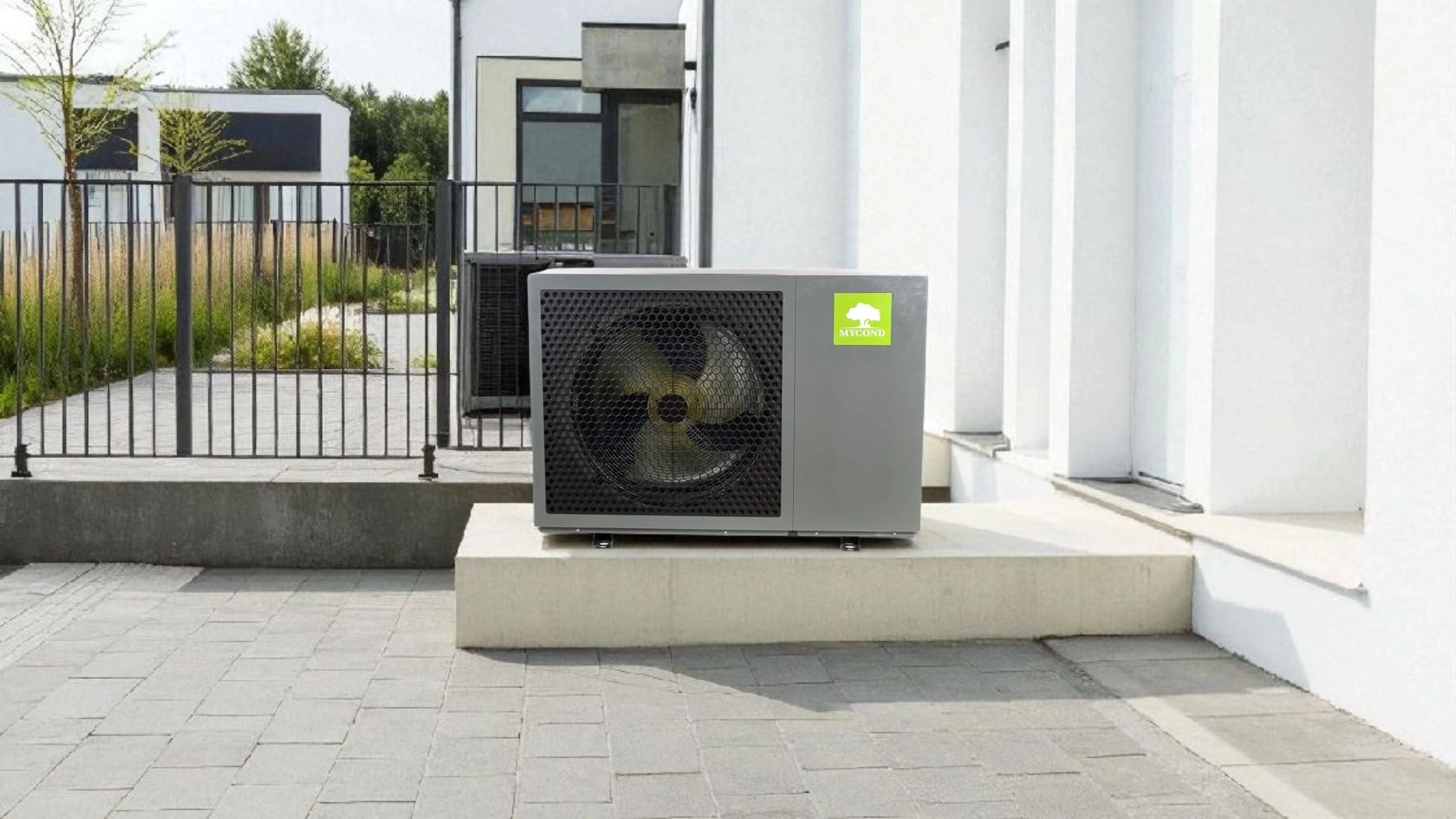
The challenge of retrofitting heating without replacing radiators
Older heating systems, especially in homes built before the 2000s, have their own specifics. Cast-iron or steel radiators, single-pipe systems with natural circulation — all of this was designed to operate with high supply temperatures. The temperature schedule of such systems often reaches 70–90°C on the supply and 60–70°C on the return. This creates a serious problem when trying to modernize heating without a major overhaul.
Standard heat pumps on the market are mostly designed for a maximum supply temperature of 55–60°C. This is perfect for underfloor heating or modern low-temperature radiators, but absolutely insufficient for older systems. If you try to run at a lower water temperature, old radiators simply won’t emit enough heat, and rooms become cold.
Why high water temperature is needed in retrofits
Radiator heat output is directly proportional to the difference between the water temperature and the room air temperature. Old cast-iron and steel radiators were designed for high-temperature operation. If you reduce the water temperature, for example from 75°C to 55°C, the radiator’s heat output can drop by 30–40%. This means that to maintain comfort you would need to increase the radiator area by roughly the same amount.
Homeowners face a choice:
- Complete replacement of all radiators with low-temperature ones, which entails major costs and renovations
- Installing additional radiators, which is not always possible due to space constraints
- Finding a heat pump capable of operating with a high supply temperature up to 75°C
From a physics standpoint, high-temperature heat pumps do have lower efficiency compared to low-temperature ones. This is explained by the Carnot cycle: the greater the difference between the heat source temperature (air) and the heat sink temperature (water in the system), the lower the efficiency. However, even when delivering high temperatures, modern heat pumps remain 3–4 times more efficient than gas or electric boilers.
How BeeEco helps when upgrading heating systems in older homes
BeeEco is a series of air-to-water heat pumps designed specifically to solve the high water temperature challenge in retrofits. The key advantage of the series is the ability to heat the water up to +75°C, making these heat pumps an ideal solution for old heating systems without replacing radiators.
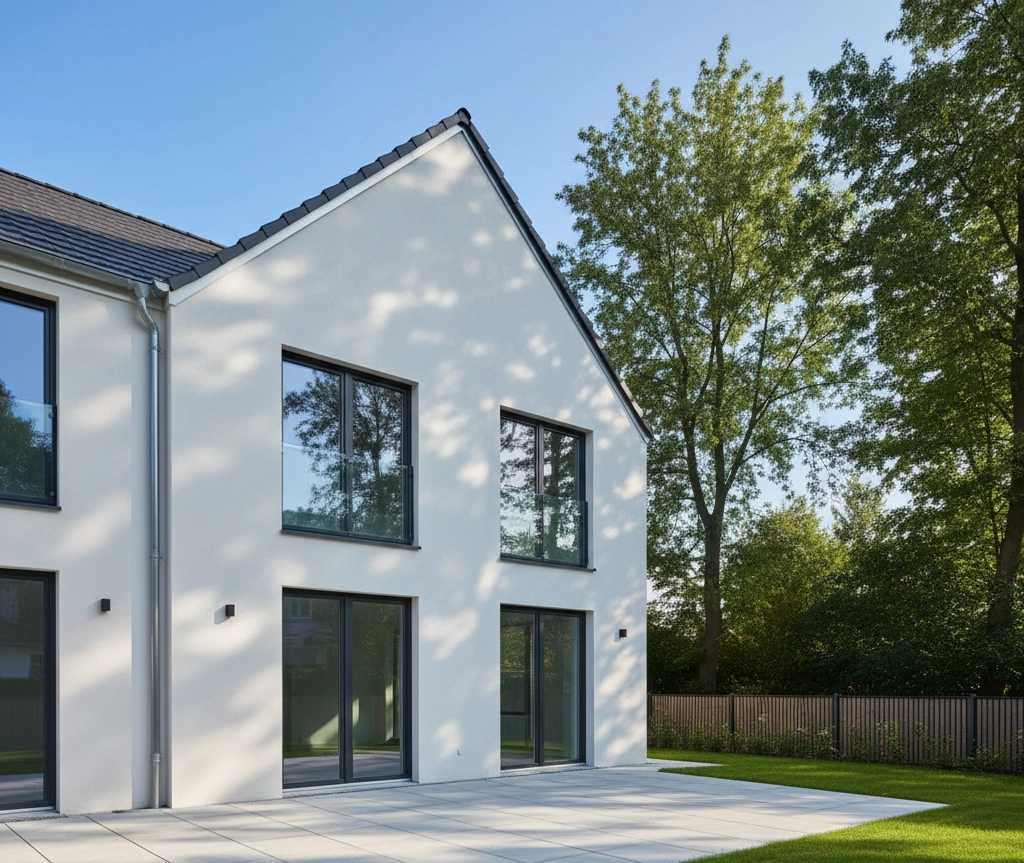
BeeEco is a monobloc heat pump with an inverter compressor that provides smooth capacity modulation depending on system demand. Thanks to the use of the eco-friendly refrigerant R290 (propane) and modern technologies, these heat pumps can operate efficiently even at outdoor temperatures down to -25°C, ensuring stable heating even on the coldest winter days.
Checklist of parameters when choosing a heat pump for a retrofit
When selecting a heat pump for retrofitting an old heating system, pay attention to the following parameters:
- Maximum supply temperature — old systems need at least 65–75°C
- COP/SCOP at high temperature — especially important values at A7/W55 and A7/W65, which show efficiency when heating water to high temperatures
- Operating outdoor temperature range — for reliable performance in cold winters, guaranteed operation to -20°C or below is required
- Heating capacity — properly matched to the building area and heat losses
- Design type — a monobloc simplifies installation and doesn’t require work on the refrigerant circuit
- Refrigerant type — preference for eco-friendly options with low global warming potential
- Integration with the existing system — required interfaces and compatibility with existing components
- Control system — weather-compensated control and remote access
BeeEco models: specifications and benefits
| Model | MHCM 06 SU1A | MHCM 12 SU3A | MHCM 18 SU3A |
|---|---|---|---|
| Heating capacity A7/W35 | 6.3 kW | 12.2 kW | 18.5 kW |
| Heating capacity A7/W55 | 5.95 kW | 10.5 kW | 16.8 kW |
| COP A7/W35 | up to 4.85 | up to 4.75 | up to 4.78 |
| COP A7/W55 | up to 3.23 | up to 3.15 | up to 3.19 |
| Maximum supply temperature | +75°C | +75°C | +75°C |
| Operation down to outdoor temperature | -25°C | -25°C | -25°C |
| Power supply | 230V/50Hz | 400V/50Hz | 400V/50Hz |
| Weight | 110 kg | 123 kg | 184 kg |
| Sound level | 48 dB(A) | 50 dB(A) | 55 dB(A) |
When BeeEco is the right choice
BeeEco is especially advantageous in the following cases:
- Retrofit without replacing radiators — if you have cast-iron or steel radiators that require a high water temperature of 65–75°C, BeeEco is one of the few residential heat pumps capable of delivering such temperatures
- Single-pipe heating system — allows you to keep the existing piping without complex hydraulic modifications
- Installation savings — the monobloc design with all components in one outdoor unit minimizes work inside the house
- Operation in moderate climates — guaranteed operation at outdoor temperatures down to -25°C ensures reliable heating even on the coldest days
- Integration with an existing boiler — support for cascade connection enables a hybrid system
- Environmental approach — using natural refrigerant R290 instead of synthetic Freons significantly reduces environmental impact
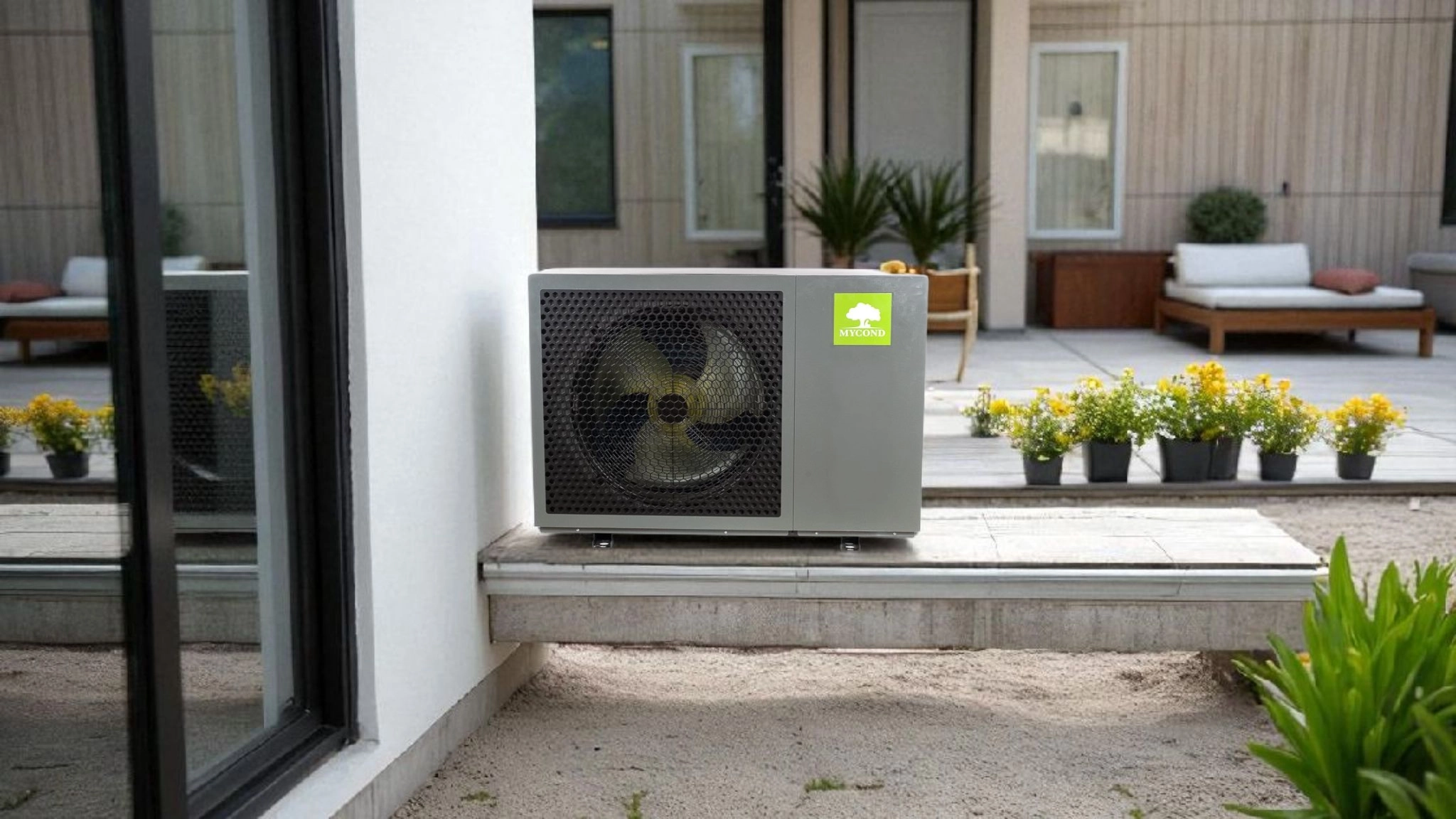
Alternatives and comparison
Let’s consider alternative options and compare them with BeeEco:
- Standard heat pumps (up to 55°C) — usually cheaper and with higher COP, but require replacing all radiators with low-temperature ones, which significantly increases the overall retrofit cost
- Gas/diesel boiler — provides high water temperature, but has much lower efficiency, produces CO2 emissions, and depends on fuel supply and prices
- Electric boiler — simple to install, but operating costs are roughly 4 times higher compared to a heat pump (COP = 1 vs COP = 3–4.8)
- Geothermal heat pump — higher COP, but requires drilling or a horizontal collector, which greatly increases upfront costs and requires suitable land
Installation and operation of BeeEco
The monobloc design of BeeEco significantly simplifies installation, as all refrigerant circuit components are housed in a single outdoor unit. This eliminates the need for refrigerant work during installation and minimizes the risk of errors.
Key connection and operation aspects:
- Connection to the old system — BeeEco has G 1-inch connections for models MHCM 06 SU1A and MHCM 12 SU3A, and G 1 ¼-inch for MHCM 18 SU3A, simplifying integration with most existing systems
- Flow rate — 0.65–1.0 m³/h for MHCM 06 SU1A, 0.9–2.1 m³/h for MHCM 12 SU3A, and 1.6–3.0 m³/h for MHCM 18 SU3A
- Touch controller — built-in weather-compensated operation ensures optimal water temperature based on outdoor conditions, significantly saving electricity
- Remote control — a smartphone app allows you to monitor and adjust the heat pump remotely
- Domestic hot water heating — DHW via an external 3-way valve with disinfection function for protection against Legionella
- Cascade control — the ability to connect several heat pumps to serve larger properties
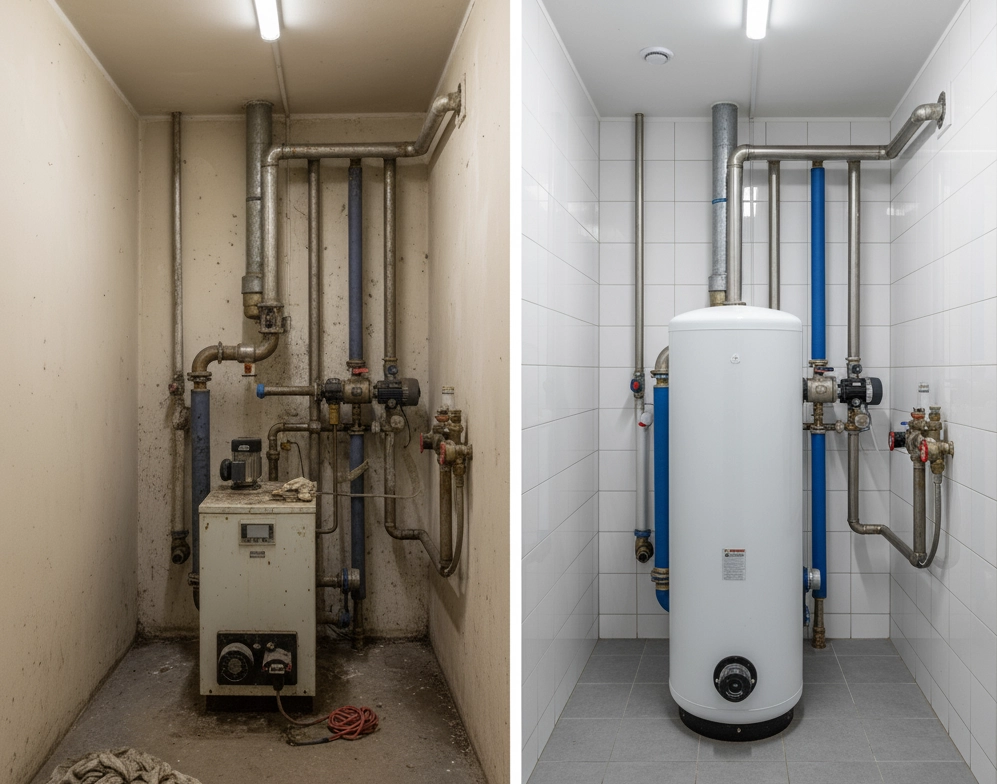
Practical solution: using the space of the old boiler
When retrofitting and replacing a gas, solid-fuel, or diesel boiler with a BeeEco heat pump, you can use the freed-up space in the boiler room efficiently. Here’s what you can install instead of the old boiler:
- Buffer tank (thermal storage) with a volume of 300–500 L:
- Stores heat and smooths peak loads
- Reduces compressor start/stop cycles
- Stabilizes system temperature
- Enables use of night-time electricity tariffs
- Improves overall system COP by 5–10%
- Domestic hot water cylinder:
- BeeEco heats water via a 3-way valve to 55–60°C
- The disinfection function protects against bacterial growth
- Hydraulic module:
- Compact unit with pumps, mixing valves, and an expansion vessel
- Simplifies system connection and setup
This solution offers a number of advantages:
- No need to find additional space for equipment
- Some of the existing piping can be reused
- The boiler room remains a functional space
- Installation and commissioning are simplified
Frequently asked questions about BeeEco
Can BeeEco be connected to cast-iron radiators?
Yes, BeeEco is specifically designed to work with high-temperature heating systems, including cast-iron radiators. Thanks to the ability to heat the water up to +75°C, the heat pump provides sufficient output from old radiators without replacing them.
What is the difference in consumption between A7/W35 and A7/W55 modes?
When operating at A7/W35 (air +7°C, water +35°C), BeeEco achieves its highest COP — up to 4.85, meaning you get up to 4.85 kW of heat for every kilowatt of electricity consumed. At A7/W55 (water +55°C) the COP drops to 3.15–3.23, but this is still three times more efficient than an electric boiler.
Do the pipes need to be replaced when installing a heat pump?
In most cases, replacing existing pipes is not necessary. BeeEco can work with traditional layouts, including single-pipe systems. It’s advisable to check pipe condition and, if needed, clean the system of scale and deposits.
Does the heat pump operate at temperatures below -20°C?
Yes, BeeEco is guaranteed to operate at outdoor temperatures down to -25°C. At extremely low temperatures, efficiency decreases, but the heat pump continues to reliably provide heating.
Can BeeEco be used for cooling in summer?
Yes, all BeeEco models support active cooling. In summer, the heat pump can operate like an air conditioner, cooling the water in the system down to +7°C. This is especially convenient for fan coil systems or chilled ceiling panels.
What is weather-compensated control and why is it needed?
Weather-compensated control automatically adjusts the water temperature based on the outdoor temperature. When it’s warmer outside, the system reduces the heating water temperature, which significantly saves electricity without sacrificing comfort. BeeEco has a built-in weather-compensated controller with touch control.
Conclusion: energy-efficient retrofit with BeeEco
BeeEco heat pumps are an optimal solution for energy-efficient modernization of old heating systems without replacing radiators. With a maximum supply temperature of +75°C, operation down to -25°C outdoors, and a high efficiency ratio, these heat pumps significantly reduce operating costs with minimal retrofit investment.
The monobloc design, eco-friendly R290 refrigerant, weather-compensated control, and remote management make BeeEco a modern, convenient, and environmentally friendly solution for heating and cooling.
Are you planning a heating retrofit but don’t want to replace radiators? Get a free consultation from our engineers on integrating BeeEco into your existing system. Our specialists will analyze your current heating system and select the optimal solution to ensure maximum comfort and savings.
Contact us today to learn more about high-temperature BeeEco heat pumps and see examples of successful heating modernization projects without replacing radiators.